For AI beginners, deploying an AI software from source code can be challenging. With a portable package, you only need to download, unzip, and double-click to use it, greatly reducing the barrier to entry. However, sometimes you may not find a ready-made portable package, or the package is not updated in time. At this time, you can try creating your own portable package and sharing it with others.
Since AI project models are usually large, plus GPU support, even compressed into 7z format, the file size may far exceed 5GB, which is difficult to upload to cloud drives and store. Therefore, I will no longer create portable packages. If you are interested, you can create your own portable package according to this tutorial and share it with others.
This tutorial uses F5-TTS as an example to create a portable package using Python 3.10 on Windows 10. The main steps are as follows:
- Download the Python 3.10 embed version (not the exe installer, but a zip archive).
- Install pip and set dependency lookup paths for the project.
- Download F5-TTS source code.
- Install the dependency modules for F5-TTS.
- Create a one-click startup script and set the model directory to the project directory.
- Configure a proxy to download the models.
- Perform a clone task to complete the download of Whisper and other models.
- Compress into a portable package.
- Make portable package for other AI projects
Preparation:
First, create an empty folder. To avoid errors, it is recommended to create an English folder on a non-system drive, such as D:\f5win. This article uses D:\f5win as an example. Then, create an empty folder runtime inside it to store the Python 3.10 embed version files downloaded later.
Before starting, be sure to click "View" in the folder navigation bar and then check "File name extensions", otherwise errors may easily occur in subsequent operations, especially for friends who are not familiar with extensions.

1. Download Python 3.10 Embed Version
Important Note: This downloads the embed version, not the exe installer. This version does not depend on your machine's Python environment. Even if you have Python installed on your machine, you still need to download this version.
Download address: https://www.python.org/downloads/release/python-31011/
After opening the web page, scroll to the bottom and click
Windows embeddable package (64-bit)to download. After downloading, you will get a zip archive.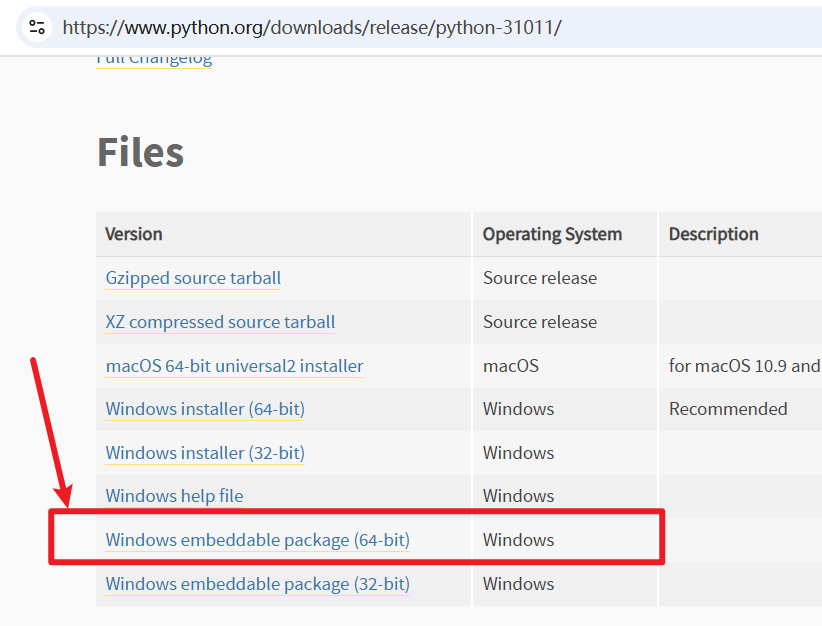
Be sure to download this version, do not get it wrong!
After the download is complete, unzip the zip archive and copy all the files inside to the
runtimefolder you just created. As shown below: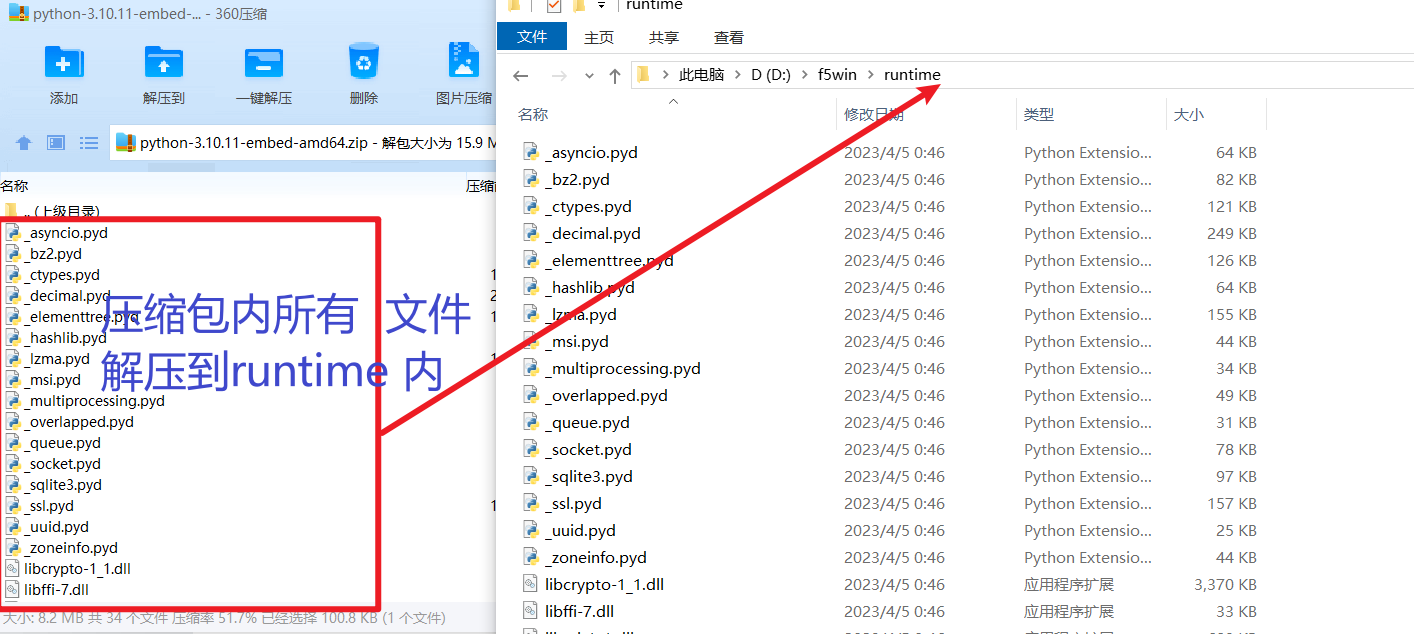
2. Install pip and Modify Package Lookup Paths
The embed version of Python does not include the pip module, so you need to install it manually.
Install pip:
Open this address: https://bootstrap.pypa.io/get-pip.py
Right-click and save as, save the file to the
runtimedirectory. After saving, theruntimefolder should have a file namedget-pip.py.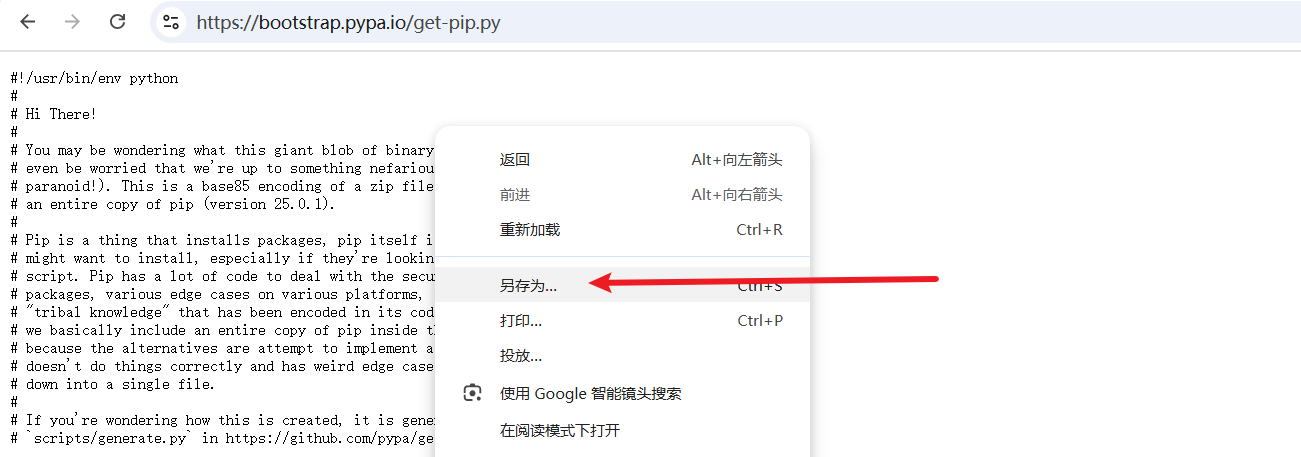
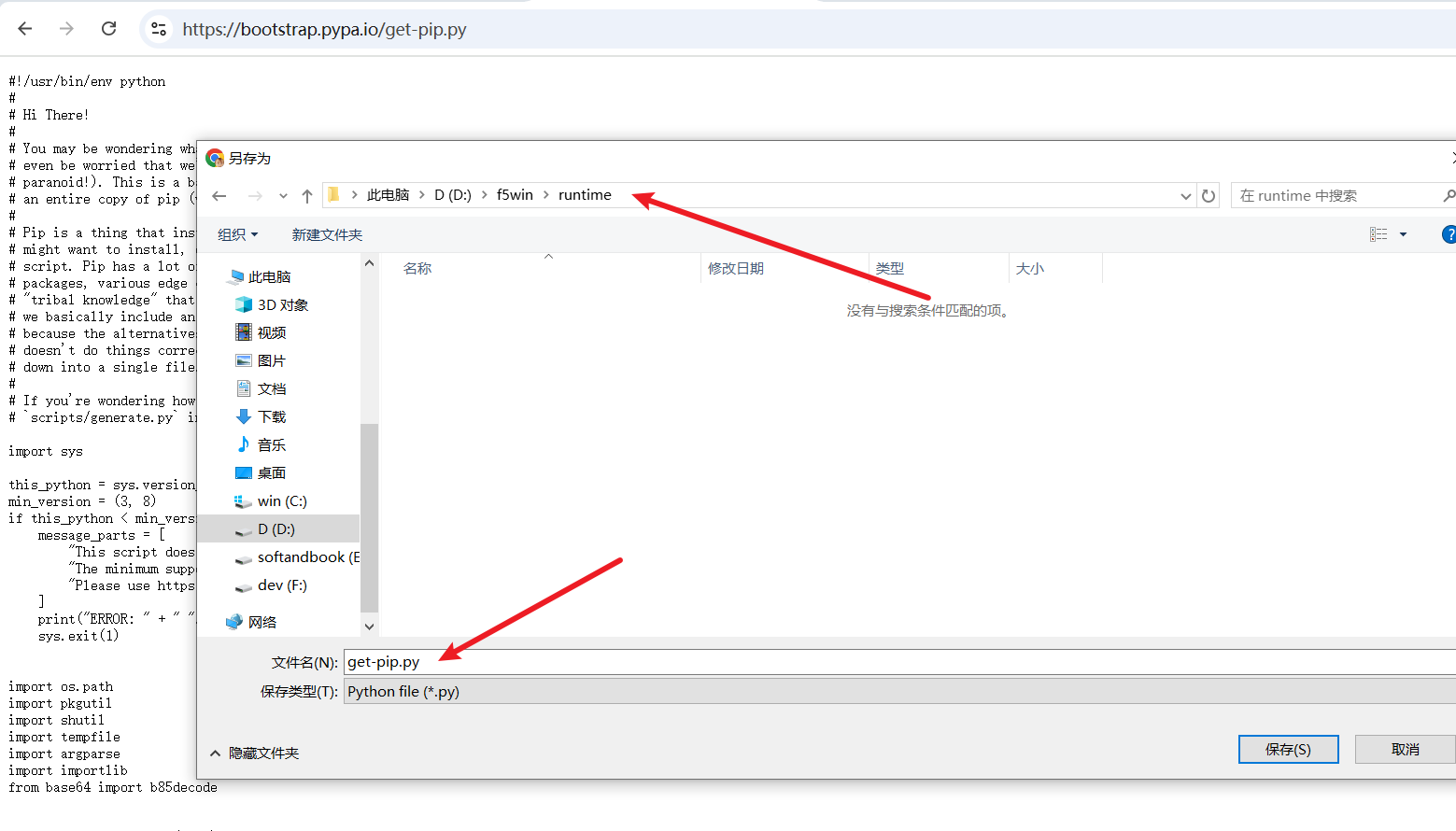
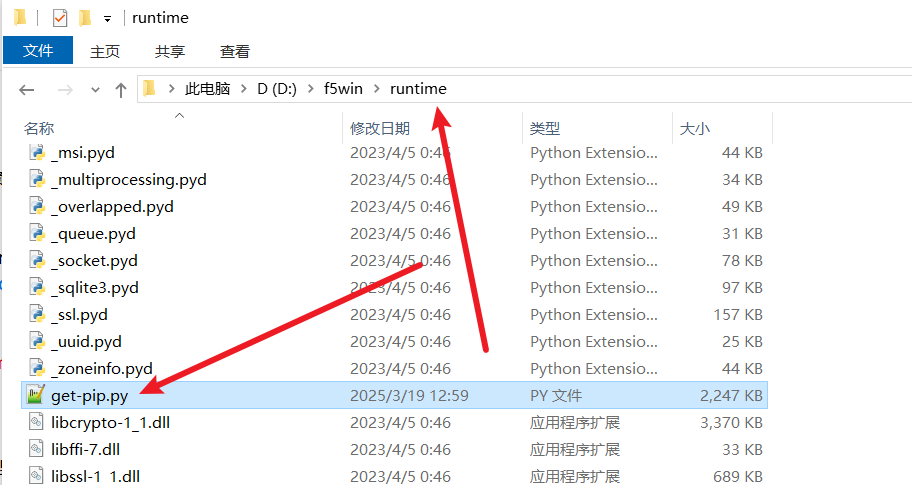
Enter
cmdin the address bar of theruntimefolder and press Enter to open a terminal window (black window).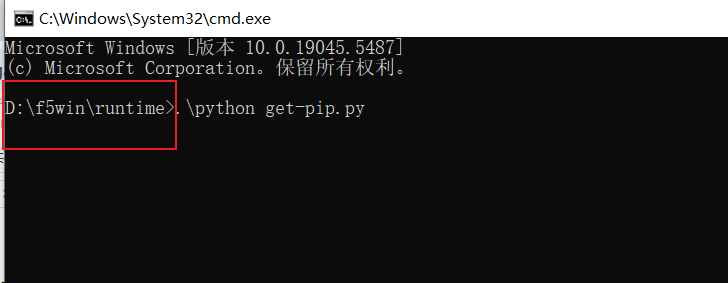
In the terminal window, enter the command
.\python get-pip.pyand press Enter. Be sure to note whether the current folder address displayed on the command line is in theruntimefolder, otherwise an error will occur.Wait for the installation to complete...
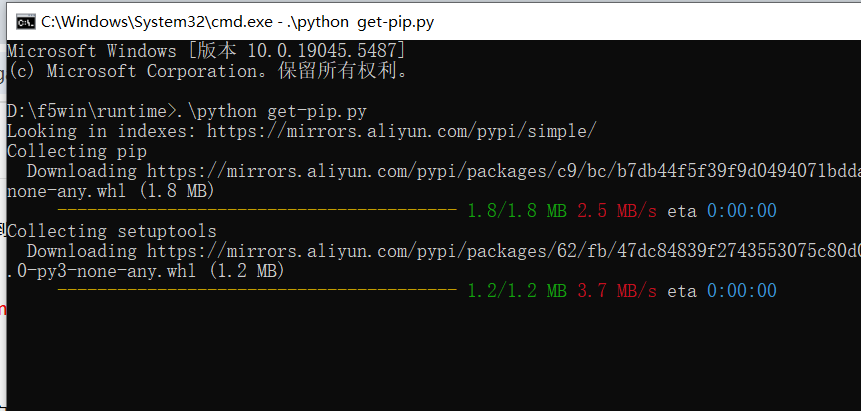
pip module installed successfully!
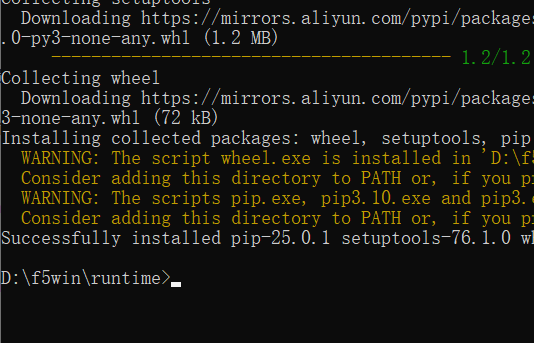
Modify the
python310._pthfile:In the
runtimefolder, find the file namedpython310._pth, right-click and open it with Notepad.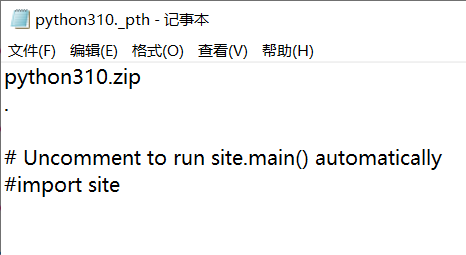
On the line below the dot symbol
.on the second line, add the following three lines of content:./Lib/site-packages ../src ../src/f5_ttsSave the file. The modified file content should be as follows. Please check carefully to ensure it is correct:
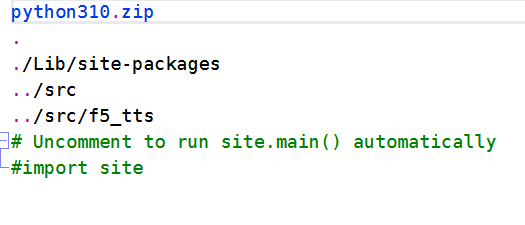
3. Download F5-TTS Source Code
Open the F5-TTS project's GitHub repository: https://github.com/SWivid/F5-TTS
Download the zip archive of the source code.
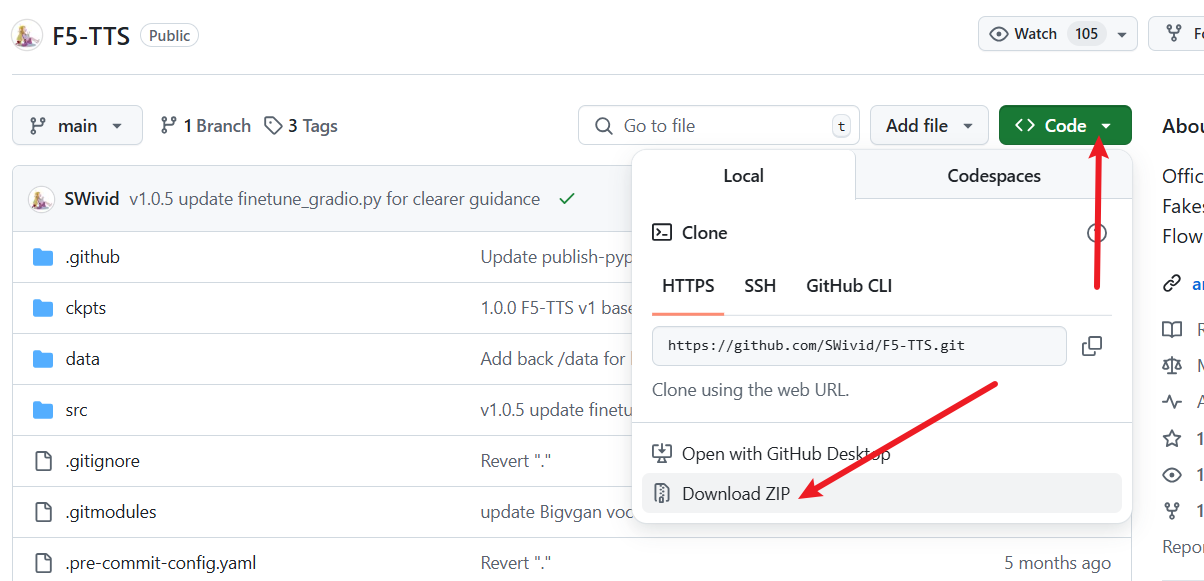
Unzip the downloaded zip package and copy all the files in the
F5-TTS-mainfolder to theD:\f5winfolder. Note: Copy the files inside, not the entireF5-TTS-mainfolder.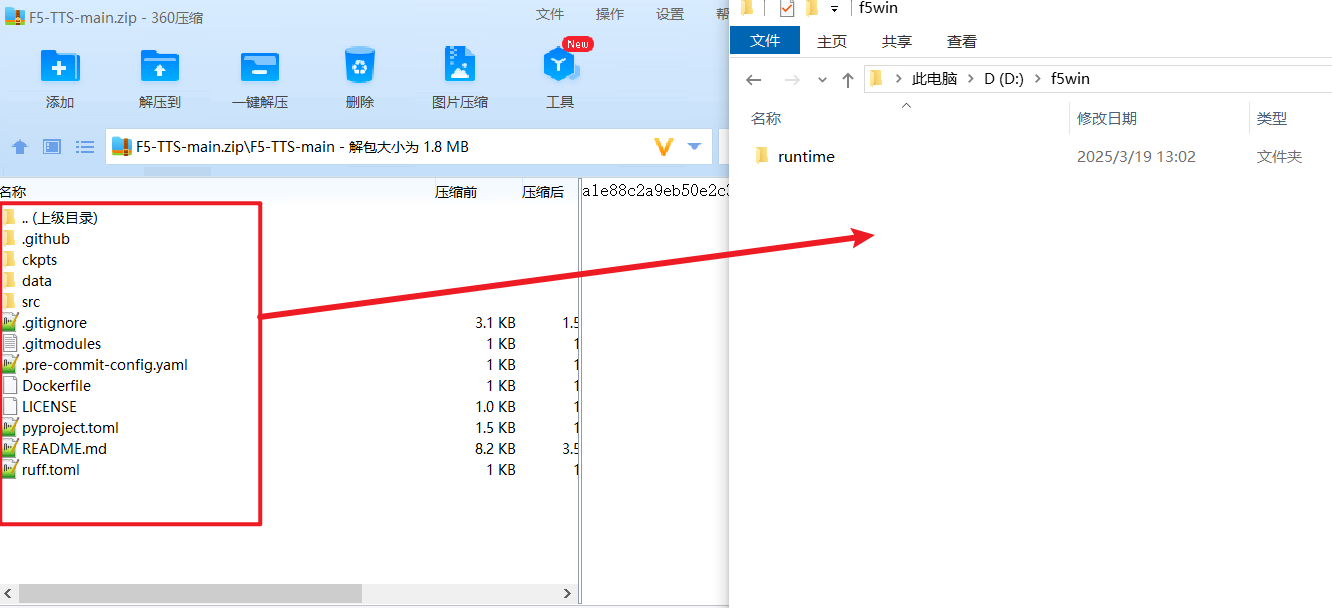
After unzipping, the content of the
D:\f5winfolder should look like this: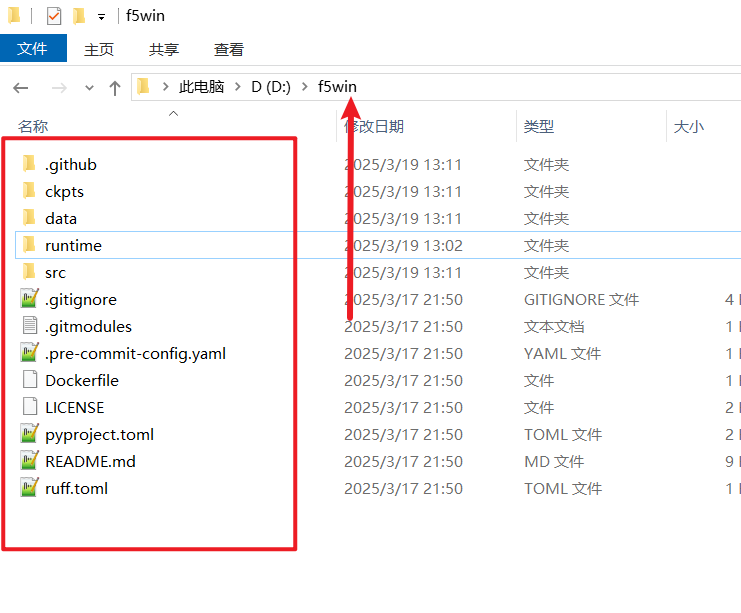
Back to the previous CMD window
In the same terminal window, execute the
cd ../command to make sure that the address before the command line has been reduced by theruntimecharacters, and become as follows. The following operations must be performed in theD:/f5windirectory.

4. Install Dependency Modules
Return to the cmd terminal window and confirm again that the path displayed on the current command line is
D:\f5win(withoutruntime).Execute the following command to install dependencies (note the spaces and dot symbols):
.\runtime\python -m pip install -e .
Wait for the installation to complete...
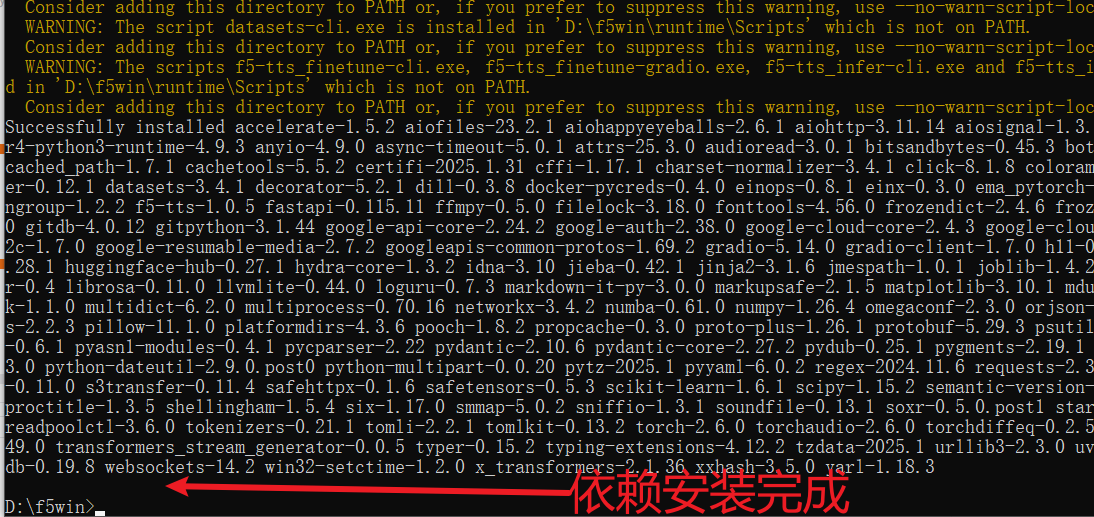
- If you want the portable package to support NVIDIA graphics cards (optional): Continue to execute the following command to install the CUDA version of PyTorch and torchaudio (note the spaces and dot symbols, the command cannot be wrapped):
.\runtime\python -m pip install torch==2.4.0+cu124 torchaudio==2.4.0+cu124 --extra-index-url https://download.pytorch.org/whl/cu124
5. Create a One-Click Startup Script
By default, the models are saved to the user directory on the C drive. For the convenience of integration, we need to download the models into the portable package.
- In the
D:\f5winfolder, right-click -- New -- Text Document, create arun.txtfile, open it with Notepad, and enter the following code:

@echo off
chcp 65001 > nul
set "HF_HOME=%~dp0models"
set "MODELSCOPE_CACHE=%~dp0models"
echo HF_HOME: %HF_HOME%
echo MODELSCOPE_CACHE: %MODELSCOPE_CACHE%
"%~dp0runtime\python" -m f5_tts.infer.infer_gradio --inbrowser
pauseThe above script means: save the model to the
modelsfolder in the current directory, then start the web interface, and automatically open it in the browser
After saving the file, rename
run.txttorun.bat. A warning will pop up at this time, select "Yes". If no warning pops up, it means you have modified it incorrectly, please check whether the file extension is displayed as described in the preparation at the top of this article.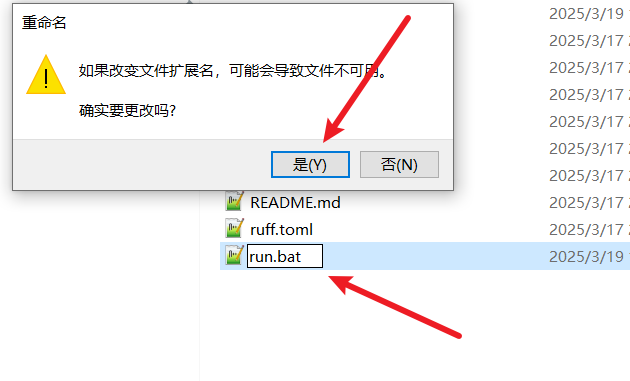
6. Configure Scientific Internet Access Environment
Due to the limitations of the domestic network environment, you cannot directly access Hugging Face (huggingface.co) where the F5-TTS model is located. Therefore, you need to configure a scientific Internet access environment and set it as a system proxy.
For example, if the tool is v2ray, you can set it like this:
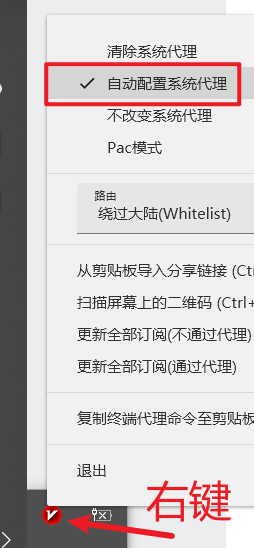
After the configuration is complete, double-click the run.bat file you just created.
If the file is opened directly with Notepad after double-clicking, it means that you failed to modify the extension, please return to the preparation at the top of this article and select the file extension according to the instructions.
If a black window opens after double-clicking, it will start downloading the model to the
D:\f5win\modelsfolder.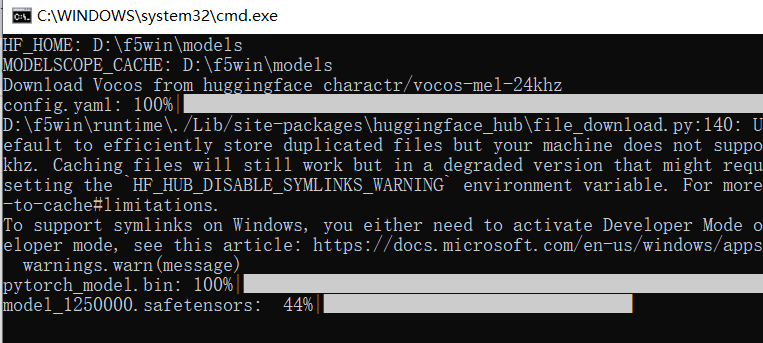
If an error similar to the following appears, it means that you have not configured the scientific Internet access environment properly, or have not set it as a system proxy correctly, causing you to be unable to connect to Hugging Face to download the model.

Sometimes it will fail halfway through the download. The biggest reason is that your proxy node is unstable. Please replace it with a more stable proxy or node.
After the model is downloaded, the browser window will open automatically.
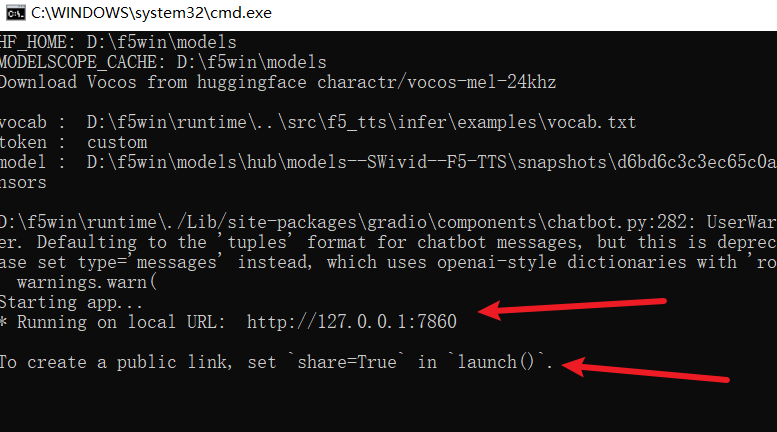
7. Perform a Clone Task to Download the Whisper Model
When performing voice cloning, if the text corresponding to the reference audio is not provided, F5-TTS will automatically download the Whisper model from Hugging Face. To package it completely, we need to download it in advance.
In the automatically opened Web window, select a clean reference audio of 5-10 seconds, enter the text you want to synthesize (for example, "Hello friend"), and click "Synthesize".
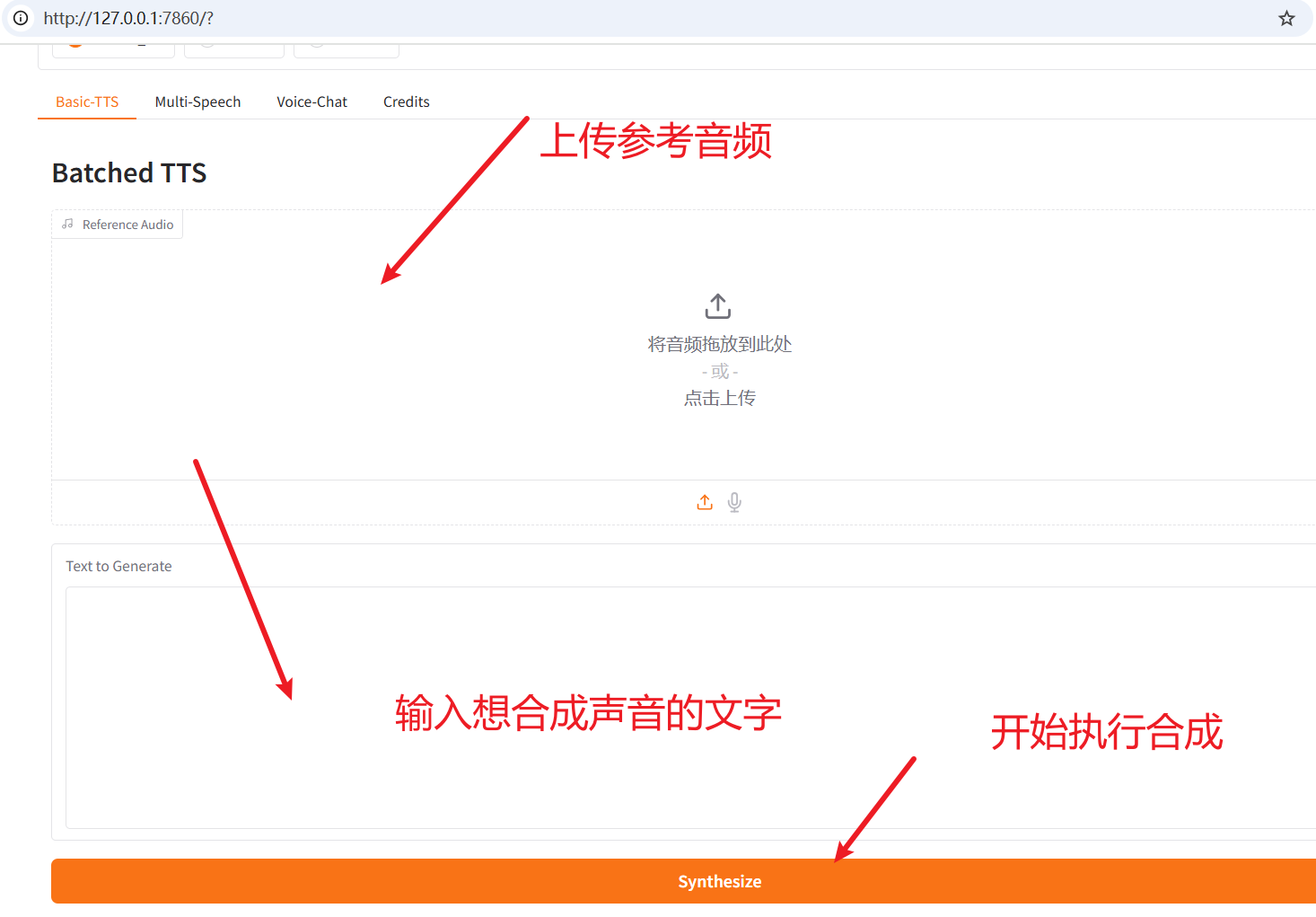
This will start downloading the Whisper model.

When the synthesis is successful and there are no errors, you can start packaging the project into a portable package.
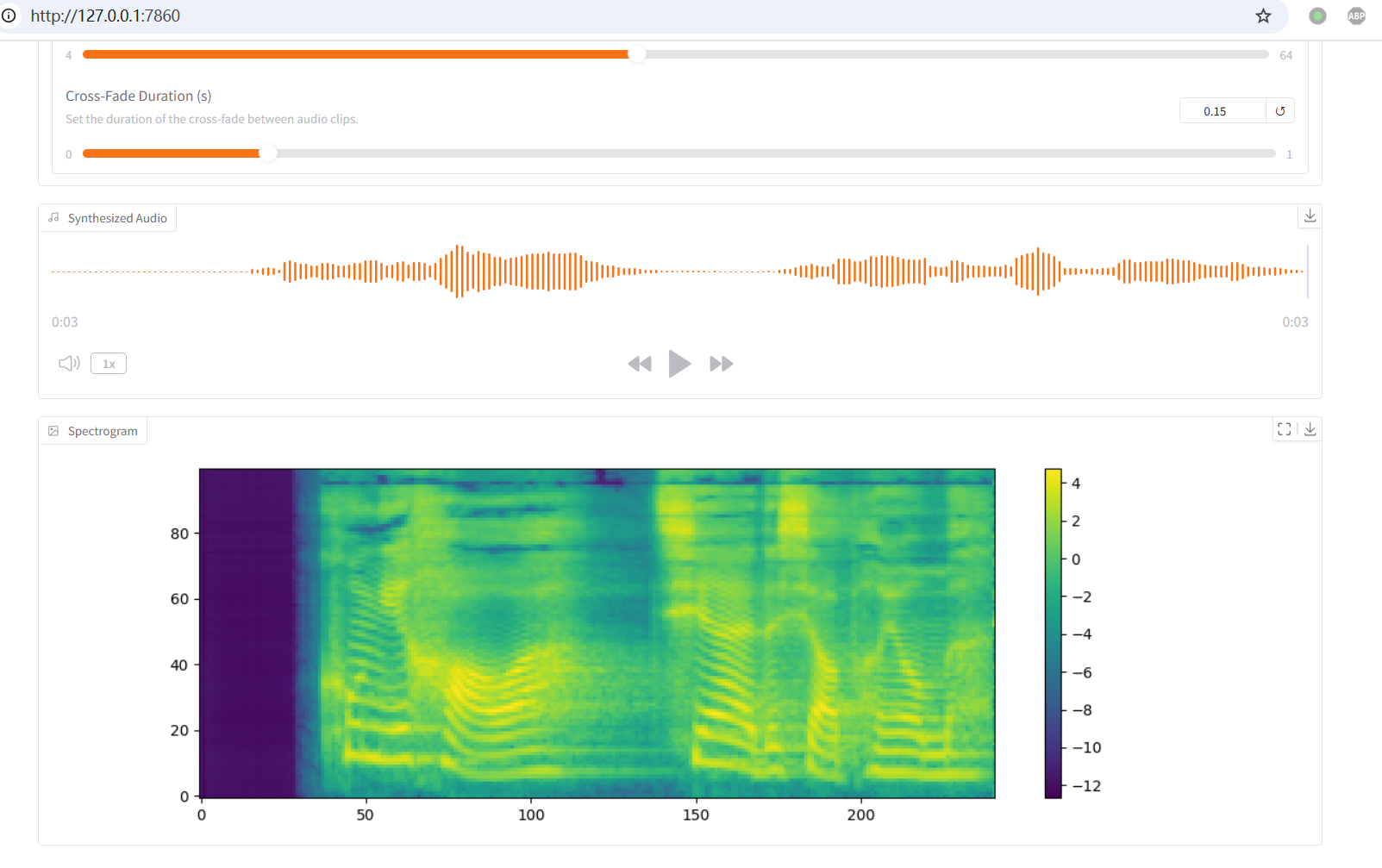
8. Compress into a Portable Package
- Before compressing, you can rename
run.battoClick Me to Start.batto make it easier for novice users to understand. - Compress the entire
D:\f5winfolder into a zip file, or compress it into a smaller 7z file. - Share the compressed package with others, and they can use it by unzipping it and double-clicking
run.bat(orClick Me to Start.bat).
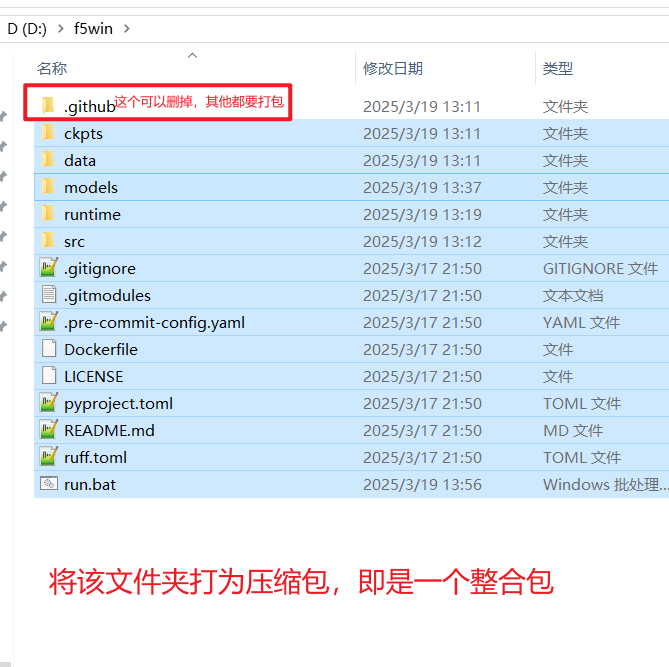
9. How to Create Portable Packages for Other AI Projects
Most Python-based open-source projects on GitHub can be packaged in a similar way. The main differences are in the following three points:
Python Version: Python 3.10 is the most common version and is suitable for most projects. If the project has special requirements (such as 3.11 or 3.12), you can find the corresponding version of
Windows embeddable package (64-bit)on this page https://www.python.org/downloads/windows/. Be sure to note that you cannot download the exe installer.Content of the
python310._pthfile:./Lib/site-packagesis still required to be added.- Other paths are added according to the actual situation of the project.
- If there is a code directory named
cfgin the project, add a line../cfg. - If the project has a
srcdirectory, and there are other folders undersrc, continue to add../src/folder name.
Startup command of the
run.batscript:- You only need to modify this line of command:
"%~dp0runtime\python" -m f5_tts.infer.infer_gradio --inbrowser - The
"%~dp0runtime\python"part remains unchanged, and the part after it is changed to the command to start the corresponding project (not includingpython). - If you have any questions, you can give the content of
run.batand the startup command of the corresponding project to AI, and let it give a new startup script based onrun.bat. Remember to tell the AI to use the Python interpreter inrun.bat.
- You only need to modify this line of command:
